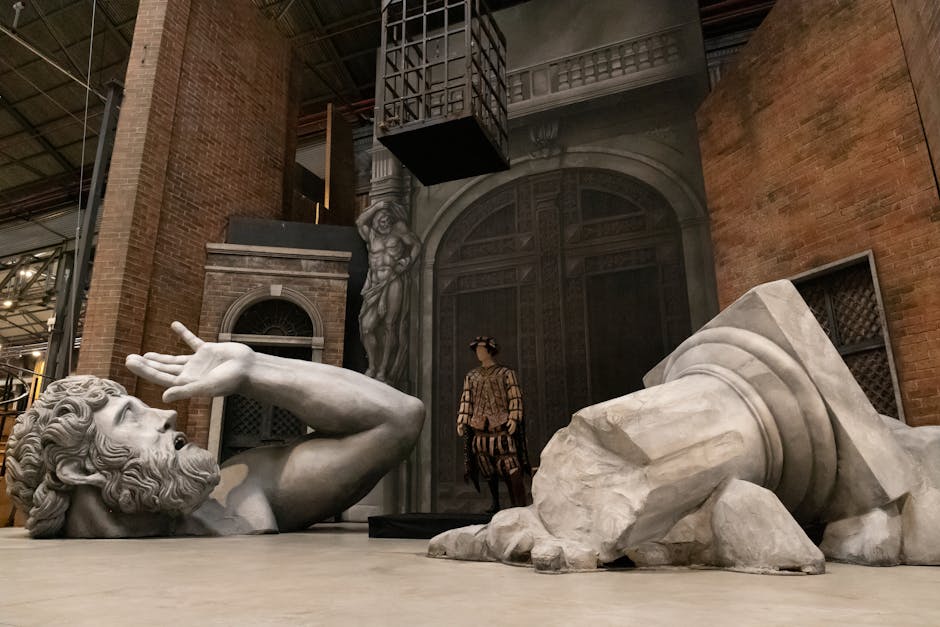The Myth of Columbus Proving the Earth Was Round
One of the most persistent myths in history is the belief that Christopher Columbus set out on his 1492 voyage to prove that the Earth was round. This widely held misconception suggests that people in Columbus’s time thought the Earth was flat, and that he had to convince skeptics otherwise. Historical records indicate that educated Europeans had recognized the Earth as a sphere long before Columbus set sail.
Writers in the 19th century helped spread the myth, depicting Columbus as a forward-thinking explorer challenging the misconceptions of his time. In reality, ancient Greek scholars such as Pythagoras and Aristotle had already provided evidence for a round Earth, and by the Middle Ages, most navigators and scholars agreed with this view. Columbus’s real hurdle wasn’t debunking the flat Earth myth but persuading sponsors that sailing west to Asia was feasible, despite miscalculating the planet’s actual size.
The Origins of the Flat Earth Myth
The idea that medieval Europeans believed in a flat Earth is largely a fabrication from later centuries.

Ancient Greek philosophers, including Aristotle and Eratosthenes, had already demonstrated through astronomical observations and geometric calculations that the Earth was a sphere. Eratosthenes, in particular, estimated Earth's circumference with remarkable accuracy in the 3rd century BCE.
During the Middle Ages, European scholars built upon this knowledge. Medieval universities and scholars like Thomas Aquinas frequently described the Earth as a sphere. It wasn’t until the 19th century that authors such as Washington Irving in A History of the Life and Voyages of Christopher Columbus helped spread the false narrative that Columbus was fighting against widespread ignorance.
What Columbus Actually Believed
Columbus accepted the long-standing idea of a spherical Earth, but his miscalculation came from underestimating its size. He assumed sailing west from Europe would be a fast route to Asia, but his calculations of Earth's size were inaccurate. He relied on inaccurate calculations from earlier geographers, including Paolo Toscanelli.
The debate over Columbus's voyage centered not on Earth's shape but on whether his plan was realistic with the navigational understanding of the time. Many scholars correctly argued that the distance between Europe and Asia via the Atlantic was far greater than Columbus assumed. Had the Americas not been in his path, his expedition would have likely failed due to insufficient supplies.
Evidence That People Knew The Earth Was Round
- Ancient Greeks provided mathematical and observational evidence for Earth's curvature.
- Sailors observed ships disappearing over the horizon hull-first, supporting a spherical model.
- Lunar eclipses showed Earth's round shadow on the Moon.
- Medieval scholars frequently referenced a spherical Earth in educational texts.
The Persistent Effect of This Misconception
The myth of Columbus proving the Earth's roundness has endured because it fits into a narrative of scientific progress triumphing over ignorance. It simplifies history into a story where one man challenges and overturns outdated beliefs. However, this version distorts reality and overlooks centuries of accumulated knowledge about Earth's shape.
This misconception continues to be taught in some schools and appears in popular culture despite extensive historical evidence debunking it. Examining the origins of this myth reveals how later interpretations often reshape historical narratives more than the events themselves.
The belief that Columbus proved the Earth was round is a historical inaccuracy rooted in 19th-century storytelling rather than medieval reality. Educated people had accepted Earth's spherical nature for centuries before his voyage. The real challenge Columbus faced was convincing supporters of his flawed theory regarding Asia’s proximity. Recognizing this myth reminds us of how history can be reshaped over time and why critical examination of sources remains essential. For further details on historical misconceptions, visit Smithsonian Magazine.
Exploring the Historical Timeline of Earth's Shape Understanding
Observations and scientific progress have dramatically refined our understanding of Earth's shape over the centuries. This timeline showcases major milestones in humanity's understanding of Earth's shape.
- 6th Century BCE:Greek philosopher Pythagoras was one of the earliest to propose that Earth is round, drawing conclusions from his study of celestial movements.
- 4th Century BCE: Aristotle provides more concrete evidence for a spherical Earth through lunar eclipses and observations of stars, strengthening the case for Earth's curvature.
- 3rd Century BCE: Eratosthenes calculates Earth's circumference with surprising accuracy using shadows in different locations, marking a significant step in mathematical geography.
- 1st Century CE: The Roman scholar Pliny the Elder references Earth's roundness in his work "Natural History," indicating acceptance among learned Europeans.
- 8th Century CE: Islamic scholars like Al-Khwarizmi further refine geographical knowledge, building upon Greek foundations with enhanced mathematical precision.
- 13th Century CE: Thomas Aquinas incorporates Aristotle's ideas into Christian doctrine, reinforcing the view of a round Earth within medieval scholasticism.
- 15th Century CE:During Columbus's era, navigators regularly accounted for Earth's curvature in their calculations, though many still misjudged its true size.
- 19th Century CE: Washington Irving's portrayal of Columbus fighting flat Earth beliefs emerges, distorting historical understanding but capturing public imagination.
This timeline illustrates that the notion of a flat Earth was not a dominant belief in educated circles for many centuries. Over time, knowledge grew from early observations to advanced calculations and models, becoming widely accepted among scholars well before Columbus's time. Exploring these milestones helps us appreciate how historical narratives are formed and sometimes distorted over time. To explore historical geography in greater depth, visitbritannica.com.